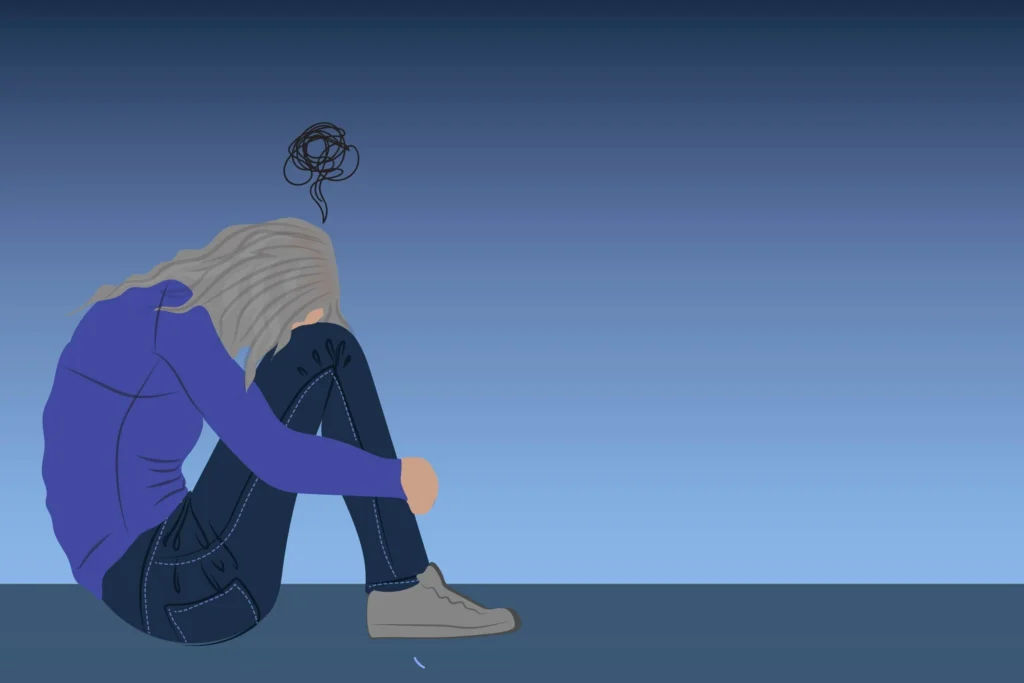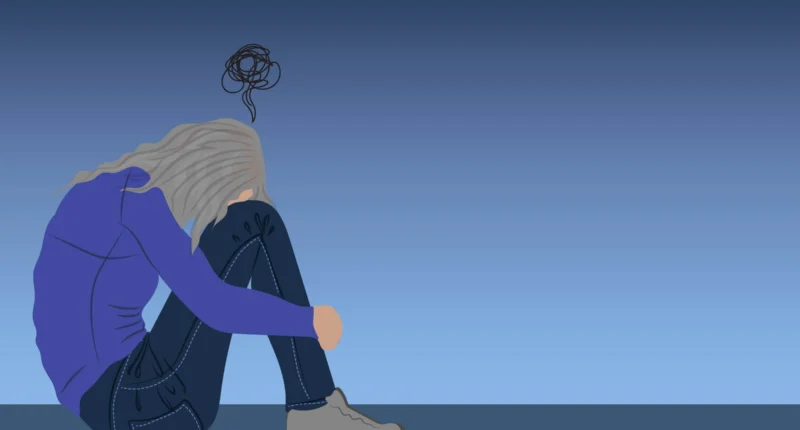Depressive disorder, commonly referred to as depression, is a prevalent mental health condition characterized by persistent feelings of sadness, as well as a diminished interest or pleasure in activities over a prolonged period.
Depression stands apart from regular fluctuations in mood and the typical ups and downs of everyday life. It has the potential to impact various aspects of one’s life, including relationships with family, friends, and the community. It can also manifest as difficulties in school or work settings.
Depression does not discriminate and can affect anyone. Individuals who have endured abuse, significant losses, or other stressful events are at a higher risk of developing depression. Additionally, women are more likely to experience depression compared to men.
Statistics show that approximately 3.8% of the population, including 5% of adults (4% among men and 6% among women), as well as 5.7% of adults aged 60 and above, suffer from depression (1). Worldwide, an estimated 280 million individuals are affected by depression (1). Notably, depression is about 50% more prevalent in women than in men. Furthermore, over 10% of pregnant women and those who have recently given birth experience depression globally (2). Sadly, suicide claims the lives of over 700,000 people each year and stands as the fourth leading cause of death among individuals aged 15 to 29.
Despite the existence of effective treatments for mental disorders, more than 75% of individuals in low- and middle-income countries do not receive appropriate care (3). Barriers to receiving effective treatment include inadequate investment in mental healthcare, a scarcity of trained healthcare professionals, and the social stigma associated with mental disorders.
Symptoms and Patterns:
During the course of a depressive episode, an individual may encounter a persistent low mood, characterized by feelings of sadness, irritability, or emptiness. They may also experience a diminished sense of pleasure or interest in activities that once brought them joy.
It’s important to note that a depressive episode differs from typical fluctuations in mood. These episodes typically endure for the majority of each day, nearly every day, for a minimum of two consecutive weeks.
Additional symptoms often accompany a depressive episode, such as:
- Difficulty concentrating
- Experiencing excessive guilt or feelings of low self-worth
- A sense of hopelessness regarding the future
- Thoughts of death or suicide
- Disturbed sleep patterns
- Changes in appetite or weight
- Profound fatigue or a significant decrease in energy levels
Depression can impact various aspects of an individual’s life, including their social interactions within the community, as well as their performance at home, work, and school.
Based on the number and severity of symptoms, as well as the impact on an individual’s daily functioning, a depressive episode can be classified as mild, moderate, or severe.
Different patterns of depressive episodes exist, including:
- Single episode depressive disorder: This refers to an individual’s first and only experience of a depressive episode.
- Recurrent depressive disorder: This indicates a history of at least two previous depressive episodes.
- Bipolar disorder: In this case, depressive episodes alternate with periods of manic symptoms. Manic symptoms may include feelings of euphoria or irritability, heightened activity or energy levels, and other indicators such as increased talkativeness, racing thoughts, inflated self-esteem, decreased need for sleep, distractibility, and impulsive or reckless behavior.
Contributing Factors and Prevention:
Depression arises from a complex interplay of social, psychological, and biological factors. Individuals who have undergone adverse life events, such as unemployment, bereavement, or traumatic experiences, have a higher susceptibility to developing depression. Conversely, depression can perpetuate a cycle of increased stress, dysfunction, and exacerbation of both the individual’s life circumstances and the depression itself.

The relationship between depression and physical health is intertwined. Many factors that contribute to depression, such as physical inactivity or excessive alcohol consumption, are also recognized as risk factors for various diseases like cardiovascular disease, cancer, diabetes, and respiratory disorders. Similarly, individuals with these health conditions may also experience depression due to the challenges associated with managing their illness.
Prevention programs have demonstrated efficacy in reducing the occurrence of depression. Effective community-based approaches include school-based initiatives aimed at fostering positive coping skills among children and adolescents. Interventions targeting parents of children with behavioral issues have shown promise in reducing parental depressive symptoms and improving outcomes for both parents and children. Additionally, exercise programs designed for older individuals have proven effective in preventing depression.
Diagnosis and Treatment of Depression:
Effective treatments are available for depression, including psychological therapies and medication. If you are experiencing symptoms of depression, it is essential to seek professional care.
Psychological therapies are typically the first-line treatments for depression. They can be used alone or in conjunction with antidepressant medications for moderate to severe depression. Mild depression often does not require antidepressant medication.
Psychological treatments aim to provide individuals with new coping strategies, thinking patterns, and improved interpersonal relationships. They may involve talk therapy conducted by trained professionals or supervised lay therapists. These therapy sessions can take place in-person or online, and there are also self-help resources available, such as manuals, websites, and apps.
Effective psychological treatments for depression include:
- Behavioral activation
- Cognitive-behavioral therapy
- Interpersonal psychotherapy
- Problem-solving therapy
Antidepressant medications, such as selective serotonin reuptake inhibitors (SSRIs) like fluoxetine, can also be prescribed in certain cases.
Healthcare providers need to consider potential adverse effects associated with antidepressant medication, the availability of treatment options, and individual preferences when determining the appropriate course of action.
It’s important to note that antidepressants should not be used for treating depression in children, and caution should be exercised when prescribing them to adolescents.
For bipolar disorder, different medications and treatments are utilized, tailored specifically to address the symptoms and challenges associated with the condition.
Self-Care:
Self-care practices can play a crucial role in managing depression symptoms and promoting overall well-being. Here are some actions you can take:
- Make an effort to engage in activities that used to bring you joy or fulfillment.
- Stay connected with your friends and family for emotional support and companionship.
- Incorporate regular exercise into your routine, even if it’s a short walk or light physical activity.
- Maintain consistent eating and sleeping patterns as much as possible.
- Minimize or avoid alcohol consumption and illicit drug use, as they can worsen depression symptoms.
- Share your feelings with someone you trust, such as a friend or family member.
- Seek help from a healthcare provider who can offer guidance and support.
In the case of suicidal thoughts:
- Remember that you are not alone, and many people have overcome similar experiences with the help of others.
- Talk to someone you trust about your emotions and what you’re going through.
- Reach out to a healthcare professional, like a doctor or counselor, who can provide assistance and appropriate care.
- Consider joining a support group where you can connect with others who may be experiencing similar struggles.
If you believe you are in immediate danger of self-harm, it is crucial to contact emergency services or a crisis hotline right away to ensure your safety.









